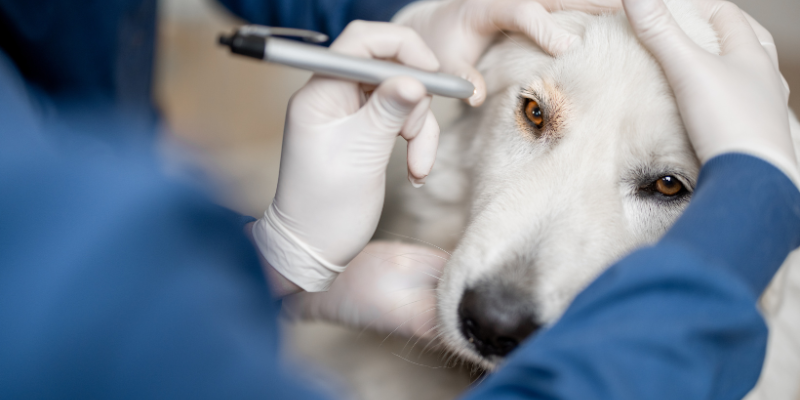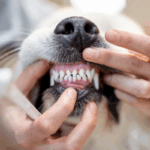When you think about mature pet health issues, you probably think about lumps, dental disease and joint problems, right?
But just like in people, older pets can also be more prone to certain eye issues, some of which can have serious long-term effects if left untreated. For this reason, we’d like to cover a few of the more common ocular issues to “keep an eye out for”, so we can help ensure that your pet continues to have the best quality of life.
Cataracts
A cataract is when the normally clear lens within the eye becomes opaque. Some breeds have a hereditary predisposition to developing cataracts, but other potential causes include diseases such as diabetes.
Cataracts cause your pet’s pupil to appear hazy or white (as this is where the usually clear, colourless lens sits). They can also trigger painful inflammation or glaucoma (high pressure) within the eye, causing your pet to have a reddened, cloudy, squinty, or watery eye. As they progress, cataracts cause blindness.
The good news? Cataracts can often be treated with specialist eye surgery. However, if this isn’t possible for your pet, you can still help to reduce the chances of cataract-related complications with regular checks and medicated eye drops. Additionally, many older pets with cloudy lenses will not actually have cataracts at all but are instead affected by “lenticular sclerosis” – a harmless age-related change that can look similar. This is something our vets can determine with a routine eye examination.
Eyelid tumours
It’s not uncommon for mature dogs to develop lumps on their eyelids, which can be due to blocked eyelid glands or tumours.
While eyelid tumours in dogs are often benign, they usually gradually increase in size over time, and may cause long-term irritation if they start to rub on the surface of the eye. Blocked eyelid glands (known as chalazion) may also become infected and form a stye that requires treatment.
If you notice an eyelid lump on your pet, it’s best to have it checked sooner rather than later, as in most cases, a smaller eyelid mass is a more easily treated one!
Retinal detachment
Retinal detachment is when the retina (the layer of light-sensitive cells at the back of the eye) peels away from the inner surface of the eyeball. It is most frequently caused by high blood pressure, which is particularly common in cats suffering from untreated kidney disease or hyperthyroidism (an overactive thyroid gland). However, it can also be caused by other eye issues such as trauma, inflammation or glaucoma.
The most noticeable sign of retinal detachment is sudden blindness. The pupil of the affected eye/s will also become abnormally large.
To help reduce your pet’s chances of developing high blood pressure, it’s recommended to have any pet that is eight years of age or above undergo a full health check every 6-12 months (including blood pressure measurement). It’s also safest to bring mature pets in for a prompt check-up if they ever show symptoms of increased drinking, any unexplained changes in their weight or behaviour, or any recurrent tummy upset symptoms.
For more information on keeping your four-legged family member living their best and most comfortable life, consult our friendly team.






